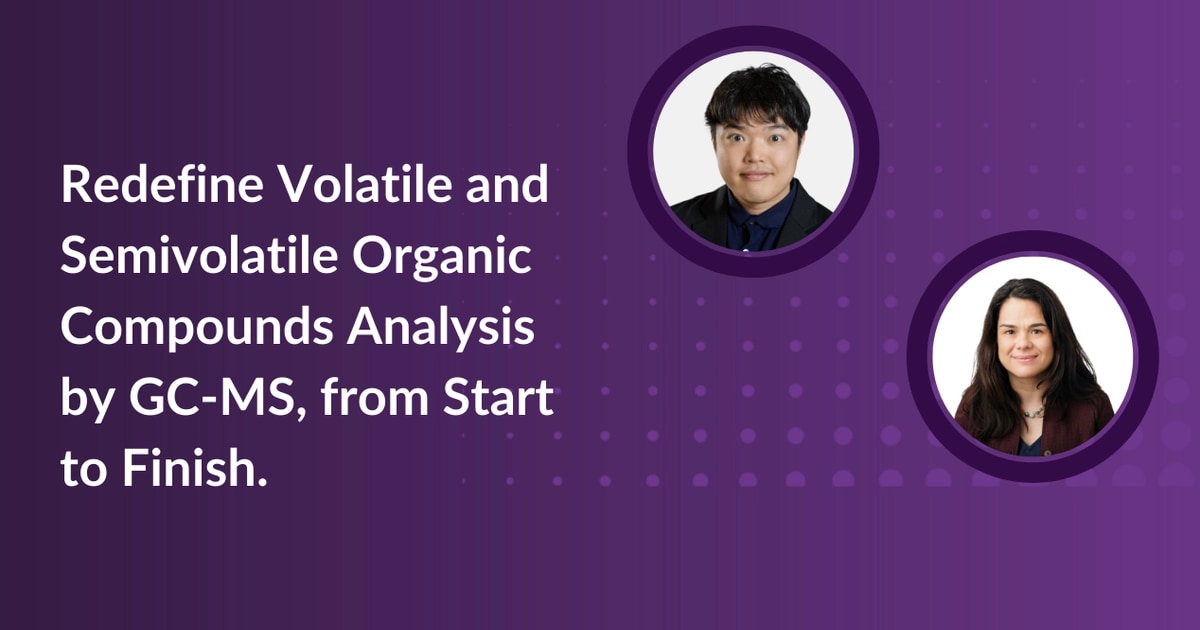Webinars
-

2023-09-05
Important Hints for Daily Use of HPLC4. Base line fluctuation and Poor reproducibility
This presentation will provide advice for routine HPLC analysis. This time we will look at baseline fluctuations and problems in reproducibility.
-

2023-09-05
Important Hints for Daily Use of HPLC3. Abnormal peak shape (Effect of sample solvent and others)
This presentation will provide advice for routine HPLC analysis. Today, I’ll be talking about abnormal peak shape, particularly the effect of the sample solvent, mobile phase, column temperature and detector response.
-

2023-05-22
Important Notices for Daily Use of HPLC: 2. Abnormal peak shape (Effect of column degradation)
These are the most likely causes for abnormal peak shape. e.g.: Column degradation/ Effect of sample solvent/ Effect of mobile phase composition/ Temperature distribution in analytical column/ Effect of filtration setting in detector We talk about countermeasures for these while showing respective examples.
More
Analysis Basics
Basics of Liquid ChromatographyFAQ
Liquid Chromatography FAQWebinars
-

2025-03-06
One System, Two Solutions: Advanced PFAS & Cyanotoxin Testing for Safer Water
In this webinar, we will introduce an innovative system with dual analysis capability for both PFAS and cyanotoxins, adhering to EPA Methods 537.1, 545, and 544. This advanced system provides a streamlined and cost-effective solution for comprehensive water quality testing. Additionally, its automated method-switching capability reduces the need for manual intervention, minimizing labor and increasing efficiency.
-

2023-02-07
Key considerations for everyday LC/MS analysis
Here are some basic considerations on LC/MS analysis. It is for beginners who are going to perform LC/MS analysis.
-

2022-06-28
Dual deconvolution of LC-PDA-MS data: A fast-track approach for chemical composition and impurity analysis
Now easily integratable into liquid chromatograph systems, mass spectrometry (MS) is increasingly recognized as an orthogonal detector that adds extra information to UV-based photodiode array (PDA) detectors. Analysis of chemical compositions and/or impurities is a typical application employing both PDA and MS detectors for enriching the information obtained from a single analysis.
More
Analysis Basics
Basics of Liquid Chromatograph-Mass SpectrometryFAQ
Liquid Chromatograph-Mass Spectrometry FAQWebinars
More
Analysis Basics
Basics of Gas ChromatographyFAQ
Gas Chromatography FAQWebinars
-

2025-03-06
One System, Two Solutions: Advanced PFAS & Cyanotoxin Testing for Safer Water
In this webinar, we will introduce an innovative system with dual analysis capability for both PFAS and cyanotoxins, adhering to EPA Methods 537.1, 545, and 544. This advanced system provides a streamlined and cost-effective solution for comprehensive water quality testing. Additionally, its automated method-switching capability reduces the need for manual intervention, minimizing labor and increasing efficiency.
-

2024-09-20
Redefine Volatile and Semivolatile Organic Compounds Analysis by GC-MS, from Start to Finish
In this webinar, we will explore how Shimadzu’s latest GC-MS instruments, in combination with the multi-platform software LabSolutions and LabSolutions Insight, enable successful detection, quantitation, and suspect screening of VOCs and SVOCs. Plus, discover how these tools support EPA methods, from initial sample analysis to final data reporting.
More
Analysis Basics
Basics of Gas Chromatograph-Mass SpectrometryFAQ
Gas Chromatograph-Mass Spectrometry FAQWebinars
-

2024-09-20
Redefine Volatile and Semivolatile Organic Compounds Analysis by GC-MS, from Start to Finish
In this webinar, we will explore how Shimadzu’s latest GC-MS instruments, in combination with the multi-platform software LabSolutions and LabSolutions Insight, enable successful detection, quantitation, and suspect screening of VOCs and SVOCs. Plus, discover how these tools support EPA methods, from initial sample analysis to final data reporting.
-

2020-11-10
Data Integrity Trends and Solutions
1. Timeline of Data Reliability Regulations 2. Guideline for Computerized Systems 3. Regulatory Notices and Warnings Regarding Quality Testing 4. Other Points on Data Integrity
External Link
View Details -

2020-08-18
Assuring Laboratory Data Integrity in a Time of Enhanced Regulatory Oversight
External Link
View Details
More
FAQ
Software & Informatics FAQWebinars
-

2022-03-02
Simple Good Practices for Quality Data - Precautions, Tips and Tricks for FTIR
1. Sample prep and key accessories 2. Attenuated reflectance accessory (ATR) 3. Environmental effects-CO2 and H2O 4. Library search and precautions 5. Micro analysis
External Link
1. Sample prep and key accessories 2. Attenuated reflectance accessory (ATR) 3. Environmental effects-CO2 and H2O 4. Library search and precautions 5. Micro analysis
View Details -

2021-02-19
Latest Solutions for Microplastics Analysis
The most appropriate instrument for microplastics analysis can vary depending on the properties of the sample. In this video, we outline the problem of microplastics before looking in detail at one technique, FTIR, and how it is used in combination with libraries of degraded plastics materials. In addition, we describe GC-MS/MS analysis of chemicals adsorbed onto microplastics.
External Link
View Details -

2021-02-19
Latest Solutions for Microplastics Analysis
The most appropriate instrument for microplastics analysis can vary depending on the properties of the sample. In this video, we outline the problem of microplastics before looking in detail at one technique, FTIR, and how it is used in combination with libraries of degraded plastics materials. In addition, we describe GC-MS/MS analysis of chemicals adsorbed onto microplastics.
External Link
View Details







